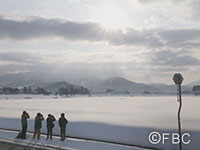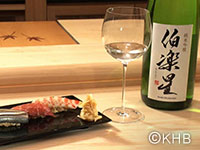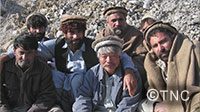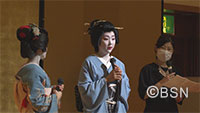Documentary
![]()
The Unsung Experts of Japan | Japan in Focus | Discover Asia | Japan’s Unsung Masters - Live! | NINJA | BOSAI: Be Prepared |
DO YOU LIKE THE COUNTRYSIDE? -Exploring Fukui Through the Lens of a Camera-
DC282285![]()
FBCスペシャル2021 #田舎は好きですか ~ファインダー越しの僕のふるさと~ [FBC]
![]()
![]()

|Length : 48min |Year : 2022 |
This program follows a 20-year-old young man who continues to take photographs in Fukui with the theme of youth and memories.
“Fukui Prefecture ranks low in terms of attractiveness nationwide, but somehow I felt frustrated and wanted to overturn that,” Yuta Tomosaki (20)said. In order to discover this, he started taking pictures during the self-restraint period of the covid-19 disaster, and took pictures of casual everyday scenery and life such as the local sea, mountains, farming villages, and friends. When he posted it on SNS, the number of followers increased to 80,000 in one year, and it attracted attention, and I realized that each photo was full of local attractions that I had not known until now.In January 2021, he took a picture of the dinosaur monument in the plaza of JR Fukui Station. When he posted it, it was picked up by internet news and became a topic such as “It looks like an ice age”, and it received more than 270,000 “nice!”.
He says, “I still admire the splendor of the city, but recently I've come to appreciate the tranquility of the countryside.” In order to convey the charm of the hometown to young people of the same generation who dream of the city, the posted image is accompanied by the question “# Do you like the countryside?”
The Sake that Bonds “Unite311” A Sake of Gratitude
DC282284![]()
絆の一献~恩返しの酒「Unite311」 [KHB]
![]()
![]()

|Length : 47min |Year : 2022 |
There is a sake brewery with a long history that was close to being forced to shut down after its facilities were destroyed in the Great Tohoku Earthquake of March 2011. At that time, brewery workers from across Japan rushed in to help them out.
This documentary follows the owner and workers of the brewery that was reborn, as they attempted to create a “special sake” that would express their gratitude to those who lent them a helping hand during that period, 10 years ago. Since that disaster, they have worked to broaden the base of the Japanese sake industry, hiring the nation’s youngest female Head Brewer, as well as a foreign Assistant Head Brewer. To mark this 10th anniversary of the disastrous earthquake, our aim is to relay to you the passion for SAKE of this brewery owner and his workers, as they move forward with heartfelt gratitude for all the support they received at the time, as well as to give you a glimpse of the progress the Tohoku region has made in its recovery.
Kaka Murad The Japanese water doctor, Nakamura Tetsu
DC282183![]()
カカ・ムラド 中村哲の信念 [TNC]
![]()
![]()

|Length : 47min |Year : 2021 |
“One canal willdo more than100 medical clinics.”
In his lateryears,the doctor ofmedicinewore more overallsthan whitecoats,
and wielded an excavatorinstead ofa scalpel, allto bringwaterto those
suffering froman unprecedenteddrought 6,300 kilometers away fromhis
Japanese homeland, andto turnAfghanistan’sparched land green.
Aimingto bring peace without weapons, and devotinghis effortsto the support
ofrefugees, he wasknown to the localsas“KakaMurad,” meaning“Uncle
Nakamura.”
Usingconstruction methods that enabledthe localsto make their own repairs, he
had a habit ofsaying, “My successor is the canal itself.”
His words came true, andthe product ofhis beliefs nowflowsthroughoutthe
once-parched land.
Why didhe devotehis life to rebuildingAfghanistan?
What exactly wasitthat spurred himinto action?
We search foranswersinhis hometown, and theDNAhe inheritedfromhis
grandfather. TelevisionNishinippon’s archivesand exclusive newfootage fromAfghanistan
provide a look at thelife ofDr. Nakamura Tetsu.
Artist of Divine SpiritMiwa Komatsu and Tears of the Earth
DC282182![]()
神獣アーティスト 小松美羽と地球の涙 [HTV]
![]()
![]()

|Length : 23min |Year : 2021 |
A contemporary artist Miwa Komatsu who is active overseas and her drawings are receiving a lot of attention.
One of the most famous museums in the world, the British Museum has selected her painted Arita porcelain guardian dogs as a part of its permanent collection. She is now one of the hottest contemporary artists in the world.
It is her unique style that attracts people. She delivers prayers to people by drawing sacred beasts such as mountain dogs, dragons, and phoenixes that only she can see.
Miwa Komatsu visits the A-bombed area of Hiroshima. What does she feel with her unique sensitivity and her view of life and death, facing the A-bomb survivors and relics?
The flowers of My Town The current lives of The Geigis of Niigata
DC282180![]()
おらがまちの華 柳都で生きる芸妓はいま [BSN]
![]()
![]()

|Length : 49min |Year : 2021 |
Aoi is a Furumachi Geigi working in Furumachi, Niigata, also known as the land of willows.
Now in her 16th year, Aoi is one of the most renowned veteran Geigi in Furumachi.
Her career stretches widely; she has lectured seminars, appeared on local television, and has even published a book of her magazine column.
The young Furumachi Geigis currently work for Ryuto Shinko Inc, the nation’s first company focused on training and managing Furumachi Geigis.
Aoi was the first ever Geigi to leave Ryuto Shinko Inc. to become an independent Geigi.
6 years after becoming independent, the global pandemic hit, and Aoi’s fear for the Furumachi Hanamachi’s future grew rapidly.
Rather than waiting for the spread of COVID-19 to slow down or for the ozashiki events to return again, she felt it was crucial for the Geigis themselves to do something.
Aoi decides to convince Ryuto Shinko and the young Furumachi Geigis to try and market Furumachi Geigi more broadly to the public, and start a branding structure with them.
Her motivation is her love towards Furumachi Hanamachi, and her seniors who protected the traditions of the Geigi culture and raised Aoi to be the Geigi she is today.
What can Aoi do to help keep ozashiki events and the Hanamachi culture of Furumachi Geigis alive? Will Aoi’s aspirations resonate with the younger generation to help bring a brighter future for the Furumachi Hanamachi?
We follow Aoi to see the past, present, and future of the Furumachi Geigi culture.















